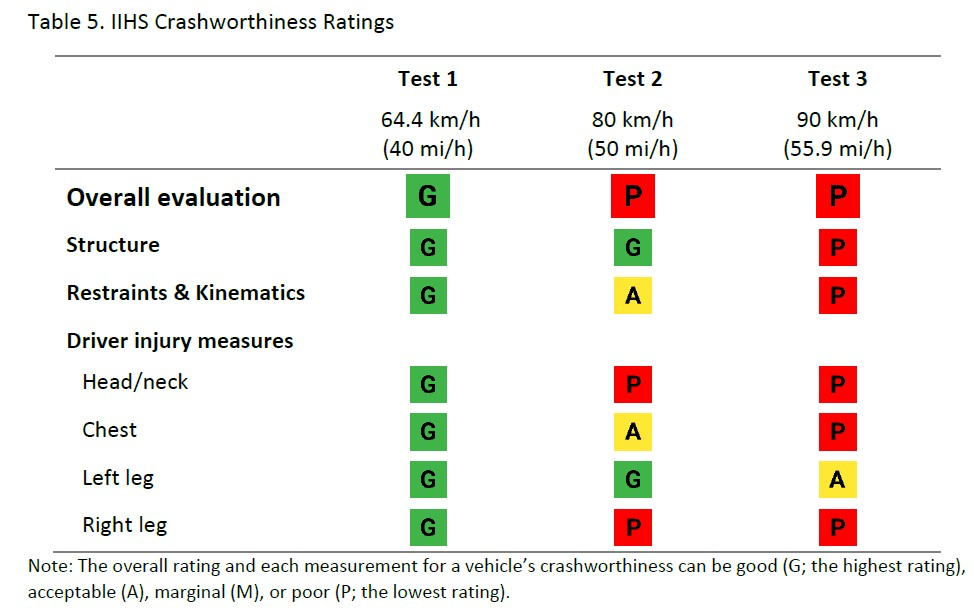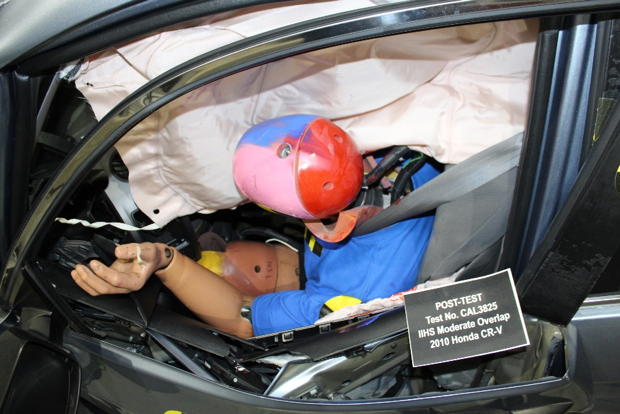New AAA research shows deadly difference in impact speeds

IDAHO FALLS, Idaho (KIFI) - Speed-related deaths and crashes have dropped in Idaho and across the country in recent years, but AAA says drivers still need to remain focused behind the wheel, maintain a safe following distance, and be ready to react at a moment’s notice to reduce the risk of serious injury.
In new research conducted by the AAA Foundation for Traffic Safety, the Insurance Institute for Highway Safety, and Humanetics Innovative Solutions, three identical 2010 model-year vehicles were fitted with crash test dummies and analyzed at impact speeds of 40, 50 and 56 mph. The model year was selected to reflect the average age of vehicles on American roads.
While sensors in the dummy from the 40-mph crash showed a relatively low risk of injury, the risk increased by 67% when the impact speed was raised to 56 miles per hour, suggesting a much higher probability of facial fracture, neck trauma and severe brain injury. The likelihood of fractures to the lower legs also increased with impact speed.

“Today’s automobiles can reach incredible speeds, and some of the latest models are also equipped with advanced safety features like Forward Collision Warning and Automatic Emergency Braking to help drivers reduce speed before a crash,” AAA Idaho spokesman Matthew Conde said. “But whether you’re driving a new car or one that’s been on the road for quite some time, we can’t get around the laws of physics – the faster a vehicle travels, the longer it takes to stop or slow down. Engaged drivers who carefully manage their speed have the best chance of avoiding a serious or even fatal injury.”
During AAA’s 50 and 56-mph crash tests, the force of the impact pushed the steering column in and up, causing the dummy’s head to go through the deployed airbag in a process known as “bottoming out.” The dummy’s face made hard contact with the steering wheel rim, hub or both with strong indications of serious injury.
“Based on AAA’s new research, the emphasis on safe speeds doesn’t end at the freeway,” Conde said. “Surface streets and state highways present their share of challenges, as does driving in rural areas, where the chances of an unexpected collision with a wild animal skyrocket. Clearly, there’s no good time or place to ‘check out’ behind the wheel.”
According to the Idaho Transportation Department, 74% of fatal crashes in the state occur on rural roads. About 86% of the Gem State’s total road mileage is classified as rural roadway. Because rural roads tend to have higher speed limits, crashes there can be more severe. In 2014, Idaho increased the speed limit to 80 mph in some areas – just the eighth state to do so.
In recent years, speed-related deaths and crashes have decreased in Idaho but may be partially offset by a rise in the number of distracted driving crashes.
| Speed-Related Fatalities (ID) | % of Total Fatalities (ID) | Speed-Related Crashes (ID) | % of Total Crashes (ID) | |
| 2008 | 74 | 31.9% | 69 | 32.5% |
| 2009 | 81 | 35.8% | 70 | 35.2% |
| 2010 | 66 | 31.6% | 55 | 29.7% |
| 2011 | 45 | 26.9% | 42 | 27.6% |
| 2012 | 61 | 33.2% | 57 | 33.7% |
| 2013 | 50 | 23.4% | 45 | 22.5% |
| 2014 | 48 | 25.8% | 43 | 24.6% |
| 2015 | 49 | 22.7% | 46 | 23.2% |
| 2016 | 54 | 21.3% | 46 | 19.8% |
| 2017 | 48 | 19.6% | 45 | 20.1% |
| 2018 | 46 | 19.9% | 45 | 21.2% |
Preventing traffic-related deaths is a high priority, but AAA and its safety partners also want to help prevent serious injury. After years of steady improvement, ITD reports that in 2019, speed-related injury and property-damage crashes were up across the board.
AAA encourages drivers to adjust their speed during times of peak congestion, inclement weather and poor visibility. Drivers should also maintain a safe following distance and give themselves plenty of time to react. States should use engineering and traffic surveys when setting maximum speed limits and adopt limits that will not degrade safety.
“As the population continues to grow and as more people get back on the road for work and play, we can all do our part to keep the roads safe,” Conde said. “Just because the speedometer says it’s possible doesn’t mean it’s something we should be doing.”








